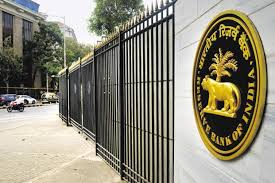RBI Policy: Why the MPC is likely to cut repo rate for the third consecutive time

The Reserve Bank of India (RBI) is widely expected to cut the repo rate once again during its upcoming Monetary Policy Committee (MPC) meeting. This would mark the third consecutive reduction in the repo rate, continuing the central bank’s efforts to support economic growth amid ongoing challenges. But what factors are driving this anticipated move? Here’s a detailed look at why the MPC is leaning towards easing monetary policy further.
What is the Repo Rate?
The repo rate is the interest rate at which the RBI lends money to commercial banks. A cut in the repo rate lowers the cost of borrowing for banks, which often leads to cheaper loans for businesses and consumers. This, in turn, stimulates spending, investment, and overall economic activity.
Recent Rate Cuts by the RBI
In recent months, the MPC has reduced the repo rate twice already to tackle slowing economic growth and inflation concerns. These cuts aim to boost liquidity in the banking system, encouraging banks to lend more freely. The current repo rate now stands at a more accommodative level, yet the RBI may see room to cut further to spur the economy.
Why is the MPC Expected to Cut the Repo Rate Again?
1. Slowing Economic Growth
India’s GDP growth has shown signs of slowing, impacted by weak domestic demand, global trade tensions, and sectoral stress such as in real estate and automobiles. Lowering the repo rate can help revive growth by making credit more affordable for businesses and consumers, encouraging investment and consumption.
2. Controlled Inflation
The MPC closely monitors inflation trends to balance growth and price stability. Recent data suggests that inflation has moderated within the RBI’s target range of 2-6%, reducing immediate risks of overheating. With inflation under control, the RBI has more flexibility to ease rates without stoking excessive price rises.
3. Global Economic Environment
The global economy faces uncertainties such as geopolitical tensions and fluctuating commodity prices, which can affect India’s export demand and capital flows. A rate cut can help cushion the domestic economy against external shocks by supporting demand and credit availability.
4. Improving Liquidity and Credit Growth
Despite previous rate cuts, credit growth has remained moderate. Further easing of the repo rate can boost liquidity, encourage banks to lend more aggressively, and help sectors struggling with funding constraints.
5. Support for Key Sectors
Certain sectors like agriculture, MSMEs, and infrastructure need continued policy support. Lower borrowing costs from a repo rate cut can stimulate these sectors, contributing to job creation and overall economic resilience.
Potential Impact of a Third Consecutive Rate Cut
- Lower Borrowing Costs: Both businesses and consumers can benefit from reduced interest expenses on loans, encouraging spending and expansion.
- Increased Investment: Cheaper credit can lead to higher capital expenditure by companies, boosting industrial output.
- Stock Market Reaction: Equity markets often respond positively to rate cuts, anticipating stronger corporate earnings.
- Currency Depreciation: A rate cut might weaken the rupee against other currencies, impacting imports but potentially helping exporters.
Risks to Watch
While a rate cut can be beneficial, the MPC must also consider potential risks such as:
- Inflationary Pressures: Excessive monetary easing can lead to rising inflation in the medium term.
- Fiscal Deficit Concerns: If government borrowing increases, the benefits of rate cuts may be offset.
- Global Financial Volatility: Sudden changes in global liquidity could impact capital flows and exchange rates.
Conclusion
Given the current economic landscape, the MPC’s inclination to cut the repo rate for the third consecutive time seems well-grounded. With growth concerns dominating and inflation staying within manageable levels, a rate cut could provide the much-needed stimulus for India’s economy. However, the RBI will continue to balance its dual mandate of promoting growth while maintaining price stability.






